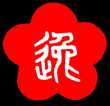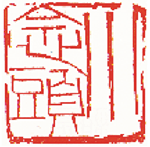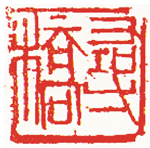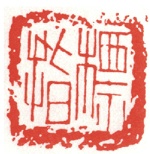
| |
| Home |
| System |
Ving Tsun Kung Fu is an ancient form of Orthodox Shaolin Boxing based on Chinese-Taoists philosophy and designed by a Shaolin Abess, Ng Moy, over 400 years ago. Legend states she was the eldest of the elders. She had great skills, but had difficulty with stronger less-skilled opponents. She developed a system that used the strength of opponents against themselves, similar to Tai Chi. Since it does not rely on physical strength, Ving Tsun is ideal for men and women of any stature.
Ving Tsun Kung Fu is a simple, quiet and gentle martial art well-suited to the needs of people in modern society. Ving Tsun training allows a state of mental and physical excellence and is an amazingly effective system in which one can become competent in a relatively short time.
Ving Tsun Kung Fu has been preserved and passed down through generations in its authentic form through a series of Grandmasters. In recent times, the greatest Master of the Ving Tsun system was the late Grandmaster Moy Yat, who was Yip Man's closest disciple for 15 years.
The study of Siu Nim Tao, Chum Kiu and Biu Je is known as the Ving Tsun Trilogy. All three forms are vitally linked to each other and their study is the foundation for growth in Ving Tsun. The Ving Tsun system must be taken in as a whole, all the parts must be learned to master the system. Each of the forms has a separate but related function in helping achieve that mastery. The Trilogy can be studied at many different levels- the physical, the practical and the internal, focus on just one aspect will limit your Kung Fu all aspects must be trained.

Tan Sau

Fook Sau

Bong Sau
1. Siu Nim Tao (Little Idea)
This is the first and most important form of the Ving Tsun System. It is said that all Ving Tsun is contained within this form and all the drills and exercises are to help us find this understanding. Siu Nim Tao is the seed that helps the student build a good foundation in Kung Fu and establishes the basics necessary to learn other forms. Siu Nim Tao translates directly from Cantonese Chinese as "Little Idea of the Beginning." This tells us that the beginning kung fu student has only to remember a little at a time. If you give too much kung fu in the beginning, the student will not be able to focus on what they are supposed to be learning. Understanding and practicing the basics is most important even for advanced students. Siu Nim Tao is the foundation and establishes the basics necessary to learn other forms.

Siu Nim Tao chop
2. Chum Kiu (Short Bridge)
The second Ving Tsun form is Chum Kiu it is a bridge to advanced Ving Tsun training and it can be translated as "Looking For Bridge". We also use the literal translation that a "chum" is also used as a measurement that equals a distance of about 8 feet and "Kiu" means bridge, so Chum Kiu in essence is "a Short Bridge from Siu Nim Tao to Biu Je." Chum Kiu is the most difficult form to learn but the most popular to play, it follows a quiet-stationary form (Siu Nim Tao) and has a lot of swift actions and movement. Chum Kiu must not be thought of as a "fighting form", if one tries to extract blocking and attacking techniques without understanding the true nature of Chum Kiu, the movements might seem illogical. Instead of "looking for bridges" to or from an opponent and trying to extract fighting movements the Chum Kiu player should be looking for all the essential features of body balance, coordination of hands and legs, smooth footwork and unified body movement.

Chum Kiu chop
3. Biu Je (Standard Compass)
The third and final form in Ving Tsun is Biu Je which is comprised of emergency techniques that train our hands to go back to the centerline just like a compass. Whenever you move a compass in a different direction, the needle always points North. Biu Je is a consolidation of the Ving Tsun System combining the elements of Siu Nim Tao and Chum Kiu, while adapting fighting movements to the framework of a form. Learning Biu Je represents the completion of the trilogy of forms, which represents sufficient knowledge to begin teaching and allows more freedom to express Kung Fu at a more personal level.

Biu Je chop
Training Sets:
1. 108 Muk Yan Jong (Wooden Dummy)
2. Moy Fah Jong (Plum Flower Pillars)
3. Gerk Jong (Kicking Pillars)
Weapon forms:
1. Luk Dim Poon Kwan (6 1/2 point pole)
2. Bot Jom Dao (8 way chopping knives)
